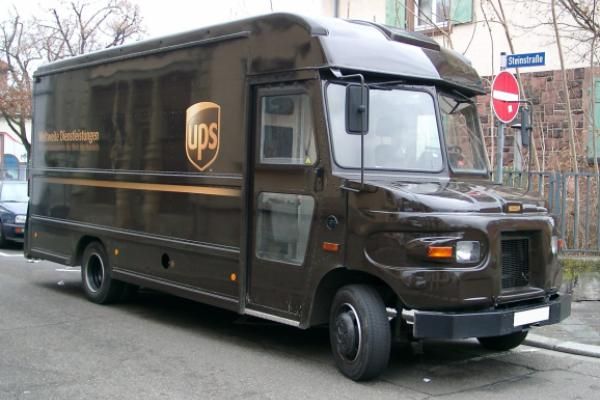



<p class="canvas-atom canvas-text Mb(1.0em) Mb(0)–sm Mt(0.8em)–sm" type="text" content="UPS Inc. (NYSE: UPS) is in the midst of a major transformation of its pricing structure – the byproduct of which could be major rate reductions for many shippers – as the shipping and logistics giant improves the efficiency of its package flow and builds shipment density in ways it has been unable to do before.” data-reactid=”32″>UPS Inc. (NYSE: UPS) is in the midst of a major transformation of its pricing structure – the byproduct of which could be major rate reductions for many shippers – as the shipping and logistics giant improves the efficiency of its package flow and builds shipment density in ways it has been unable to do before.
<p class="canvas-atom canvas-text Mb(1.0em) Mb(0)–sm Mt(0.8em)–sm" type="text" content="According to Rob Martinez, CEO of parcel consultancy Shipware, LLC, employees in UPS' revenue management operations, the group that along with its executive leadership manages the company's pricing initiatives, are currently being trained on the new structure. Armed with the retooled pricing, UPS' sales force will then pitch its own customers, as well as those shipping with rivals like FedEx Corp. (NYSE: FDX), UPS’ chief competitor in the U.S. market, Martinez said. Martinez discussed the UPS initiatives during a presentation last Thursday at the Home Delivery World annual conference in Philadelphia.” data-reactid=”33″>According to Rob Martinez, CEO of parcel consultancy Shipware, LLC, employees in UPS’ revenue management operations, the group that along with its executive leadership manages the company’s pricing initiatives, are currently being trained on the new structure. Armed with the retooled pricing, UPS’ sales force will then pitch its own customers, as well as those shipping with rivals like FedEx Corp. (NYSE: FDX), UPS’ chief competitor in the U.S. market, Martinez said. Martinez discussed the UPS initiatives during a presentation last Thursday at the Home Delivery World annual conference in Philadelphia.
In an interview after his remarks, Martinez said UPS has made significant strides in engineering greater package flow through its existing network. The result, he explained, has been both a boost in density and a reduction in the company’s unit costs as more packages move through a fixed-cost infrastructure. The savings are likely to be passed on to shippers in the form of lower rates, although some shippers may see rate increases if the company determines that it is not being properly compensated for its true cost to serve, Martinez added.
The revamped pricing program is likely to open up a new front in the market share war between UPS and Memphis-based FedEx, which combined generate about $141 billion in annual revenue. Martinez said the UPS initiative could be a huge step in separating its rate actions from those of FedEx, which in years past have moved virtually in lockstep. He added that the pricing changes will impact customers who ship business-to-business and business-to-consumer, the latter being the driver behind surging e-commerce demand. It may also play a key role in attracting small to mid-size merchants who are a top priority for UPS.
Steve Gaut, a UPS spokesman, would neither confirm nor deny the report. In a statement, Gaut said UPS “continually reviews the value we provide and the rates charged to customers in all segments. Our objective is to be fairly compensated for the value we create, while working with our customers to help them be more successful.”
Shipment density is the Holy Grail for any carrier, regardless of mode. In the parcel world, efficiency and profitability is typically measured by what is known as “stop density,” or the number of packages that can be delivered per stop. UPS built its business mostly on the back of B2B deliveries, where it was common for a driver to deliver multiple packages at each stop. However, e-commerce, which today accounts for more than half of UPS’ mix, has turned its traditional density model on its head. Many e-commerce deliveries involve one, sometimes two, packages per residence, a far cry from the multiple packages bound for one location that UPS had been accustomed to handling.
<p class="canvas-atom canvas-text Mb(1.0em) Mb(0)–sm Mt(0.8em)–sm" type="text" content="Amazon.com, Inc., (NASDAQ: AMZN) which tenders between 20 and 25 percent of its parcel volumes to UPS but which has also positioned itself as a competitor for parcel business, recently announced a program called "Amazon Day," which allows consumers and businesses to select one recurring day per week to receive all of their weekly orders. Amazon has said the program will be a convenience to customers and will reduce the number of its trucks on the road. But industry experts such as Martinez said the real payoff for Amazon is the density it will achieve by consolidating a week’s worth of deliveries into one day.” data-reactid=”38″>Amazon.com, Inc., (NASDAQ: AMZN) which tenders between 20 and 25 percent of its parcel volumes to UPS but which has also positioned itself as a competitor for parcel business, recently announced a program called “Amazon Day,” which allows consumers and businesses to select one recurring day per week to receive all of their weekly orders. Amazon has said the program will be a convenience to customers and will reduce the number of its trucks on the road. But industry experts such as Martinez said the real payoff for Amazon is the density it will achieve by consolidating a week’s worth of deliveries into one day.
UPS is in the early stages of a multi-year project in which it is building highly automated sortation facilities known as “super hubs” that the company said will be 30 to 35 percent more efficient than comparable, less-automated hubs. The expansion, which marries capacity and information technology improvements, will add between 350,000 and 400,000 pieces per hour of sortation capacity in the U.S. each year between 2018 and 2020.
The construction of five such hubs, located in Atlanta, Georgia; Dallas/Ft. Worth, Texas; Phoenix, Arizona; Salt Lake City, Utah; and Indianapolis, Indiana, will add more than 5 million square feet of capacity, UPS said.
By the time the project is completed in 2022, all of the company’s “eligible” U.S. volume will move through highly automated hubs, up from 50 percent as of December 2018, Chairman and CEO David Abney said at the time. More than 70 expansion projects will be implemented through 2022, UPS said at the time. UPS completed 17 of those projects in time for last year’s peak holiday shipping season.
The U.S. domestic segment will receive approximately two-thirds of the program’s benefits, UPS said. In a telling comment, the company said at the time that the program would “enhance revenue quality and reduce operating costs to increase operating leverage.”
UPS handles 20.7 million packages and documents each day across its global system, comprised of 220 countries. It has about 1.5 million customers who receive regular daily pick-ups.
Image sourced from Google
<p class="canvas-atom canvas-text Mb(1.0em) Mb(0)–sm Mt(0.8em)–sm" type="text" content="Want more content like this? Click here to Subscribe” data-reactid=”49″>Want more content like this? Click here to Subscribe
<p class="canvas-atom canvas-text Mb(1.0em) Mb(0)–sm Mt(0.8em)–sm" type="text" content="Permalink” data-reactid=”50″>Permalink
<p class="canvas-atom canvas-text Mb(1.0em) Mb(0)–sm Mt(0.8em)–sm" type="text" content="See more from Benzinga” data-reactid=”51″>See more from Benzinga
<p class="canvas-atom canvas-text Mb(1.0em) Mb(0)–sm Mt(0.8em)–sm" type="text" content="© 2019 Benzinga.com. Benzinga does not provide investment advice. All rights reserved.” data-reactid=”56″>© 2019 Benzinga.com. Benzinga does not provide investment advice. All rights reserved.






